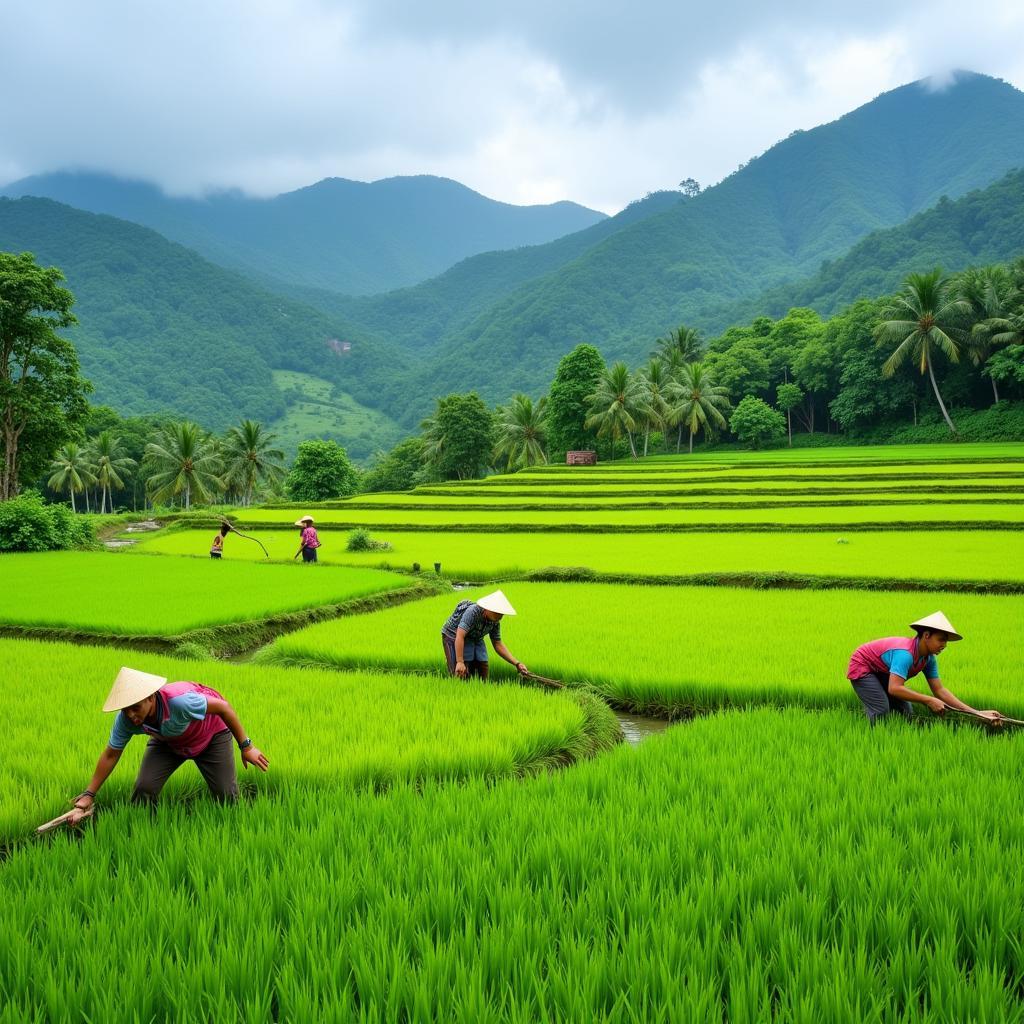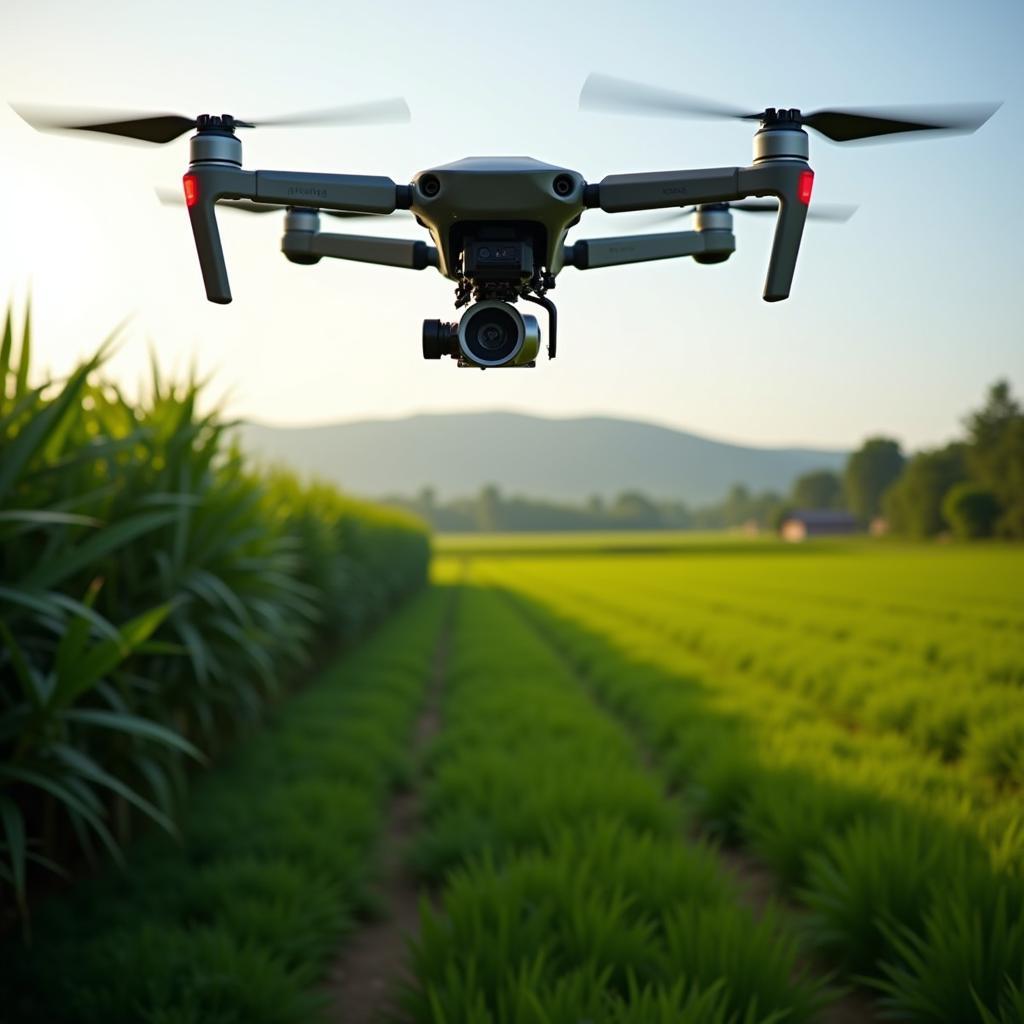Asean Agri plays a vital role in the region’s economic development and food security. Southeast Asia’s diverse agricultural landscape, ranging from rice paddies to tropical fruit orchards, contributes significantly to the livelihoods of millions and shapes the region’s cultural identity. This article delves into the complexities and opportunities within ASEAN’s agricultural sector, exploring its challenges, innovations, and potential for future growth.
The Significance of ASEAN Agri in the Regional Economy
Agriculture has long been a cornerstone of ASEAN economies, providing employment, income, and sustenance for a large portion of the population. From the fertile Mekong Delta to the volcanic slopes of Indonesia, the region boasts a rich tapestry of agricultural products, including rice, rubber, palm oil, coffee, and a wide array of fruits and vegetables. The sector’s contribution to GDP varies across member states, but its overall impact on regional prosperity is undeniable. For instance, initiatives like the ASEAN Integrated Food Security (AIFS) Framework highlight the region’s commitment to collaborative efforts in enhancing food security and promoting sustainable agricultural practices. This framework aims to address challenges such as climate change, population growth, and changing consumption patterns. The ASEAN agri-food sector faces a critical need for modernization and increased efficiency to compete globally. This includes adopting advanced technologies, improving infrastructure, and enhancing value chains.
asean agriculture summit 2017 focused on addressing these challenges.
 ASEAN farmers working in rice paddies
ASEAN farmers working in rice paddies
Embracing Innovation in ASEAN Agri: Technology and Sustainability
Technological advancements are transforming the agricultural landscape in ASEAN. Precision agriculture, using data and technology to optimize farm management, is gaining traction. Drones, sensors, and GPS-enabled machinery are being employed to enhance efficiency, reduce waste, and improve crop yields. Furthermore, biotechnology and genetic engineering are playing a crucial role in developing disease-resistant and climate-resilient crops. This is particularly important in a region vulnerable to the impacts of climate change, such as extreme weather events and rising sea levels. Sustainable agriculture is also becoming increasingly important, with a growing focus on organic farming, integrated pest management, and water conservation techniques. These practices not only protect the environment but also enhance the long-term viability and resilience of the agricultural sector. What are the challenges faced by ASEAN farmers in adopting new technologies? Access to finance, training, and infrastructure remain significant hurdles.
asean agri summit 2017 discussed these very topics.
 ASEAN technology in agriculture: Drone usage
ASEAN technology in agriculture: Drone usage
Boosting Intra-ASEAN Trade and Global Competitiveness
ASEAN agri holds significant potential for increased intra-regional trade. Harmonizing regulations, streamlining customs procedures, and improving infrastructure can facilitate the flow of agricultural goods within the region. This not only enhances food security but also creates new market opportunities for farmers and agribusinesses. Furthermore, ASEAN agri must enhance its global competitiveness. Investing in research and development, improving product quality and safety standards, and building strong brands can help ASEAN agricultural products gain a stronger foothold in international markets. This requires collaboration between governments, the private sector, and research institutions to develop innovative solutions and strategies. The ASEAN Agriculture Summit of 2017 Summary provides insights into these discussions.
asean agriculture summit 2017 summary highlights these discussions.
Conclusion: Nurturing a Sustainable Future for ASEAN Agri
ASEAN agri is at a crucial juncture. Embracing innovation, promoting sustainability, and fostering regional cooperation are essential for the sector’s continued growth and prosperity. By investing in its human capital, leveraging technology, and adopting sustainable practices, ASEAN can unlock the full potential of its agricultural sector and ensure a food-secure and prosperous future for all. The ASEAN Agri sector is poised for significant growth and transformation.
FAQ
- What are the main agricultural products of ASEAN?
- How is technology impacting ASEAN agriculture?
- What are the challenges faced by ASEAN farmers?
- How can ASEAN enhance its agricultural competitiveness?
- What is the role of sustainability in ASEAN agri?
- How does ASEAN promote regional cooperation in agriculture?
- What are the future prospects for ASEAN agri?
Need support? Contact us 24/7: Phone: 0369020373, Email: [email protected], or visit us at: Thôn Ngọc Liễn, Hiệp Hòa, Bắc Giang, Việt Nam.

